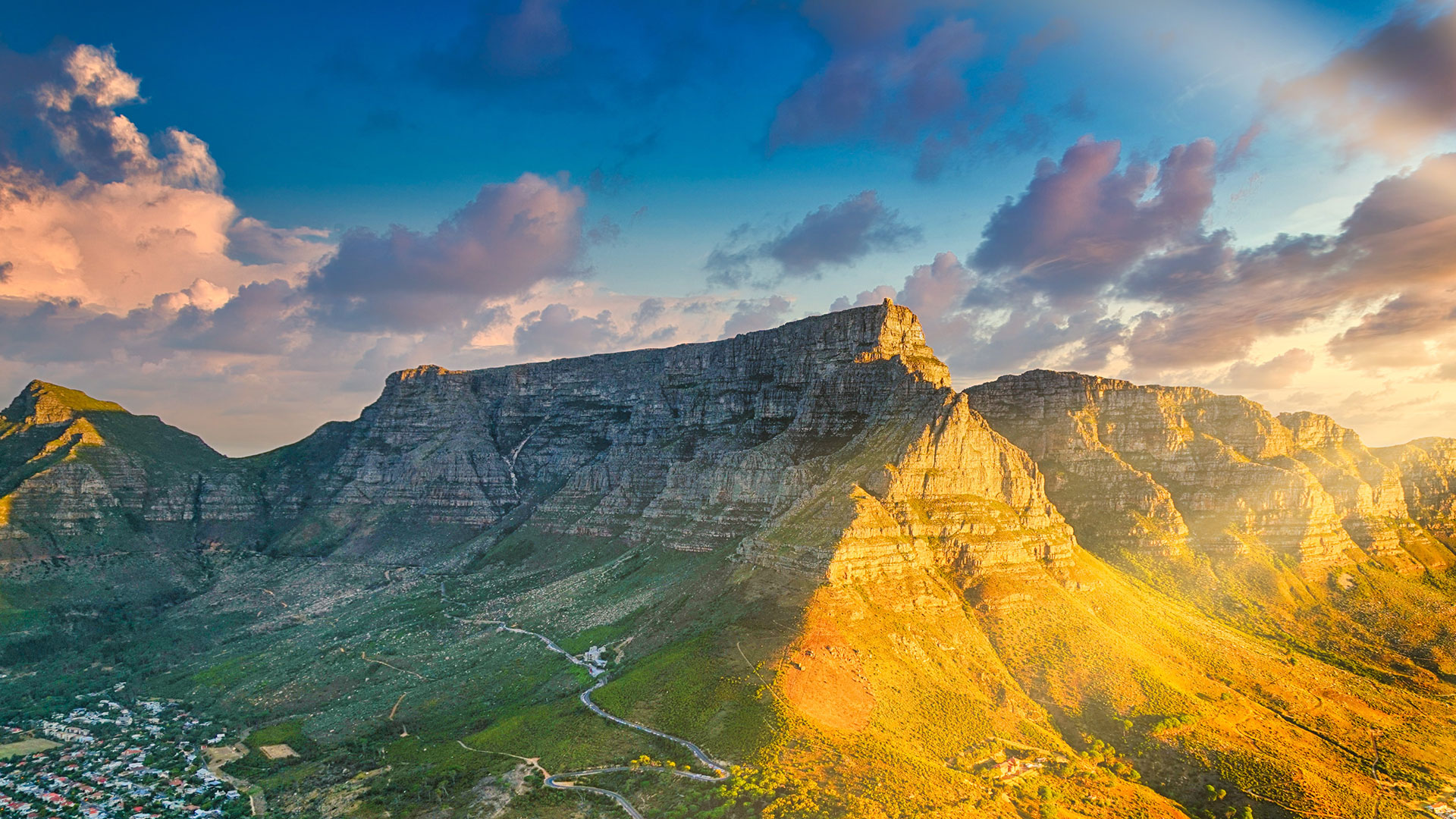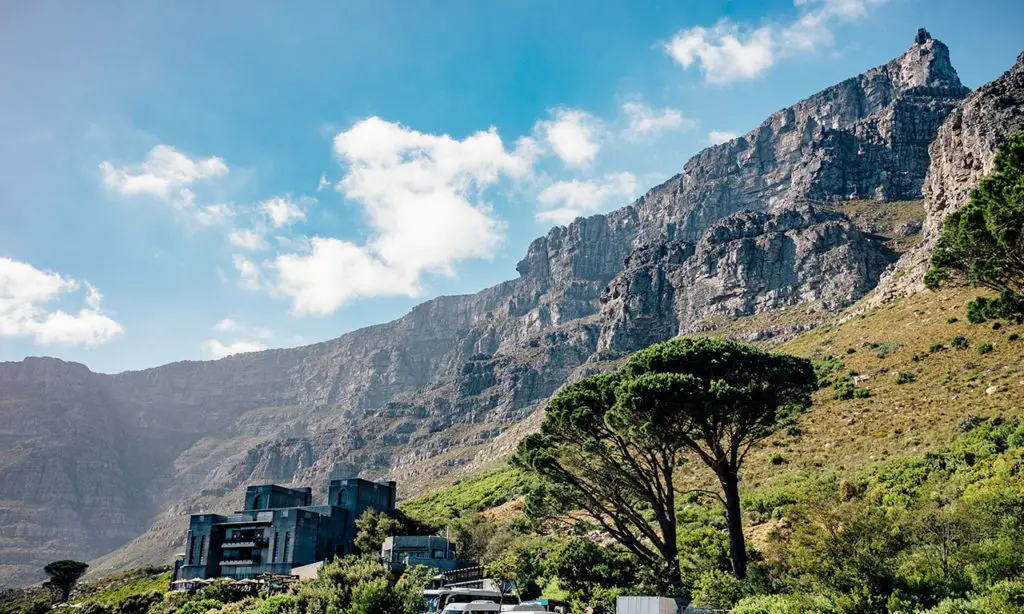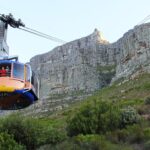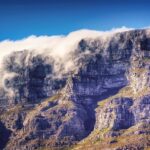Table Mountain is one of the most distinctive and recognizable landmarks in South Africa. Situated in the city of Cape Town, it boasts a flat, plateau-like top that is a unique feature among mountains around the world. In this article, we will explore the various factors that contribute to the flatness of Table Mountain, from its geology and climate to its biodiversity and cultural significance.
I was on Bloubergstrand Beach trying to take a sunset photo of Table Mountain. While I was waiting for the sun to set, I was wondering: Why is Table Mountain flat?
I did a bit of research and found a very interesting answer to this question.
Why is Table Mountain flat?
Table Mountain is flat because millions of years ago, Table Mountain’s top was still at sea level. During an ice age, which took place over 300 million years ago, sheets of ice flattened the sandstone and formed the flat table top.
Sandstone is a soft rock, but luckily not all the rocks of Table Mountain are made of sandstone. If this was the case it would not have kept its structure. Table Mountain’s strength comes from layers of hard granite which was formed by magma that cooled down underground.
Back then though, Table Mountain wasn’t the 1086m high landmark we know today. Millions of years ago, tectonic stress was caused by the continents splitting apart. Due to the strength of the granite rocks, this stress caused the layers of rock to rise. Many years after that, Table Mountain came to be, and luckily its flat top kept its shape.
Geology of Table Mountain
Table Mountain is composed of several layers of sandstone and granite that were formed over hundreds of millions of years. The lower layers of the mountain consist of sedimentary rocks that were deposited in ancient rivers and lakes, while the upper layers were formed through volcanic activity.
The mountain’s flat top is a result of the erosion of the softer sedimentary rocks, leaving behind the harder, more resistant granite. This process, known as differential erosion, has also contributed to the unique shape of the mountain.
While Table Mountain’s geology is unique, there are other mountains around the world that share similar features. One such example is the Tepuis of South America, which are also characterized by flat tops and steep cliffs.
Climate and Weather Patterns

The climate and weather patterns of the Cape Town region have played a significant role in shaping Table Mountain. The mountain is located in a Mediterranean climate zone, which is characterized by mild, wet winters and warm, dry summers.
This seasonal variation in weather has led to the development of unique plant communities on the mountain, such as the fynbos biome, which is found nowhere else in the world.
Wind erosion is another key factor that contributes to Table Mountain’s flatness. The mountain is situated in an area of strong south-easterly winds, which blow across the plateau and erode the softer sedimentary rocks.
Over time, this has resulted in the formation of the flat top that we see today.
Biodiversity on Table Mountain

Table Mountain is not only famous for its flat-top, but also for its unique biodiversity. The mountain is home to over 8,200 plant species, many of which are found nowhere else in the world.
These include the famous Protea, which is the national flower of South Africa. In addition, there are over 1,500 species of insects, 93 species of mammals, and 350 species of birds that call Table Mountain home.
The unique flora and fauna on Table Mountain have played a significant role in shaping the mountain’s flatness. The vegetation on the mountain is highly adapted to the harsh climate and geology of the area.
The fynbos vegetation, for example, is able to survive on nutrient-poor soil and is highly fire-adapted. This vegetation is responsible for the mountain’s flat-top appearance, as it has prevented erosion on the summit.
Table Mountain’s biodiversity is of immense conservation value. The mountain falls within the Cape Floristic Region, which is recognized as one of the world’s biodiversity hotspots.
The region has been identified as a priority area for conservation efforts, and Table Mountain is a key part of these efforts. In addition, Table Mountain National Park was established in 1998 to protect the unique biodiversity of the area.
Human History and Table Mountain
Table Mountain has been an important spiritual site for the indigenous people of South Africa for centuries. The Khoi people, who were the original inhabitants of the Cape Peninsula, believed that the mountain was a powerful deity that controlled the weather and the sea.
They also believed that the mountain was the home of a powerful spirit called Tsui-Goab, who controlled the fate of their people.
Table Mountain played a significant role in the history of colonialism in South Africa. The Dutch East India Company, who established a trading post at the Cape in the 17th century, used the mountain as a navigational landmark for their ships.
In 1652, Jan van Riebeeck, the commander of the Dutch East India Company, described the mountain as “a landmark that can be seen from a great distance at sea.” The British, who took control of the Cape Colony in the 19th century, also recognized the strategic importance of the mountain and used it as a signal station to communicate with their ships.
Table Mountain has become one of the most popular tourist destinations in South Africa, attracting millions of visitors every year. The cable car, which was built in 1929, provides visitors with a convenient and safe way to access the summit.
The mountain also offers a wide range of activities, including hiking, rock climbing, and paragliding. While tourism has provided economic benefits to the region, it has also put pressure on the mountain’s fragile ecosystem and raised concerns about overcrowding.
Cultural Significance
Table Mountain has played a significant role in shaping the culture and identity of South Africa. It is a symbol of the nation’s natural beauty and has been used in various ways to represent the country.
For example, the mountain appears on the South African flag and is often used as a logo for South African products.
The mountain’s unique shape and prominence have also inspired many artists and writers. The views from Table Mountain have been painted, photographed, and written about extensively.
The poet, John Keats, famously referred to the mountain as the “cloud-topped Table” in his poem ‘Endymion’. The mountain has also featured in numerous films and TV shows.
Table Mountain has become one of the most popular tourist destinations in South Africa, attracting millions of visitors each year. Tourists can take a cable car to the top of the mountain or hike up one of the many trails.
The views from the top of the mountain are breathtaking, and visitors can see as far as Robben Island, the Cape of Good Hope, and the Cape Flats.
Table Mountain Today

Current state of Table Mountain and its surrounding areas
Despite being a popular tourist destination, Table Mountain faces many challenges. The surrounding areas have been heavily developed, which has put pressure on the natural environment.
The mountain itself is also under threat from climate change, which is causing changes to weather patterns and sea levels.
To preserve Table Mountain’s unique flatness and the surrounding environment, ongoing conservation efforts are needed. These include initiatives such as reforestation, reducing plastic pollution, and promoting sustainable tourism.
Efforts are also being made to manage the impact of climate change on the mountain.
Looking to the future, it is essential to consider the impact of climate change on Table Mountain. As temperatures continue to rise and weather patterns change, the mountain may face new challenges.
It is critical to continue to monitor and adapt to these changes to ensure the long-term survival of the mountain and its surrounding environment.
Conclusion
Table Mountain is a unique natural wonder, with its flat-top appearance and rich history. Its geology, climate, and biodiversity have all played a role in shaping its distinctive features.
Table Mountain is also an essential cultural icon, representing the natural beauty and identity of South Africa. However, the mountain faces many challenges, including climate change and the impact of tourism. Ongoing conservation efforts are crucial to preserve this remarkable landmark for future generations.







